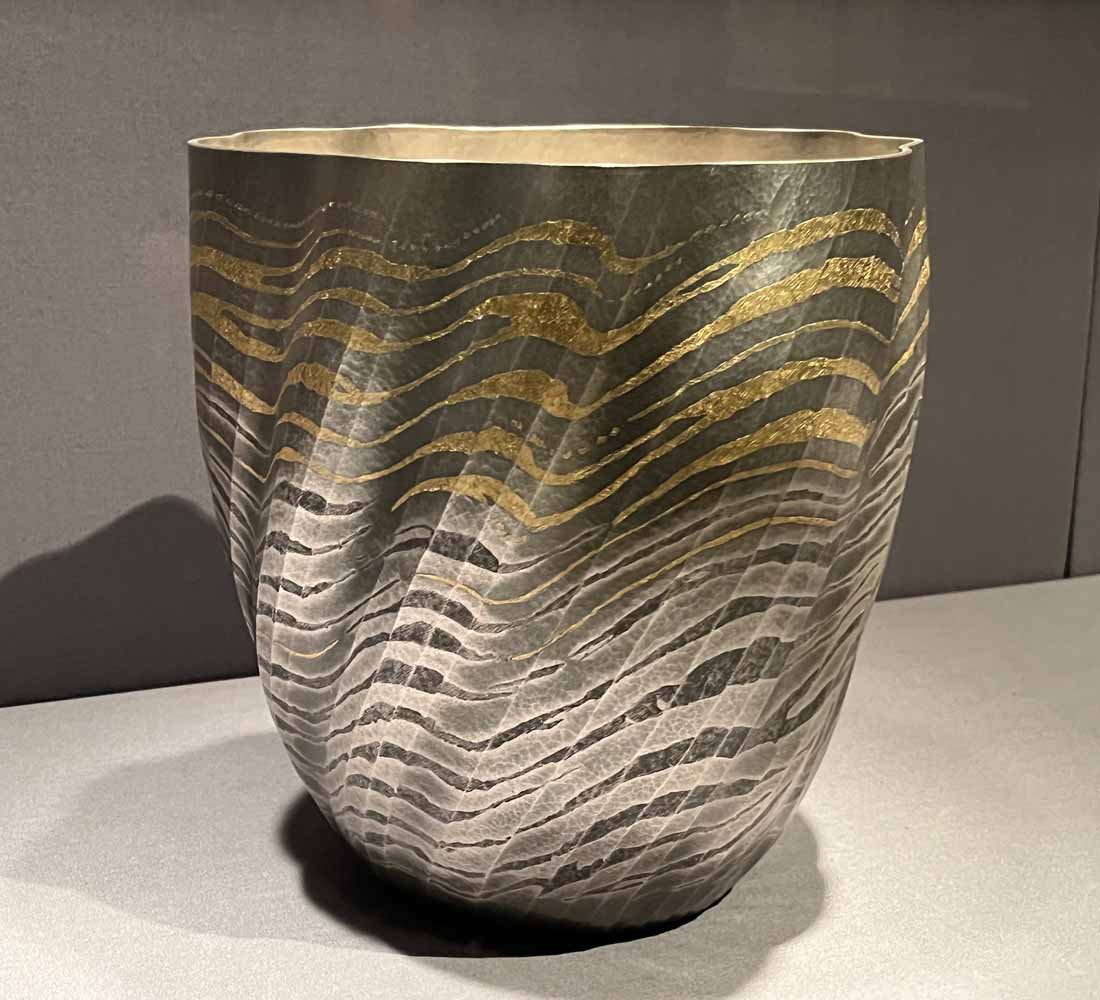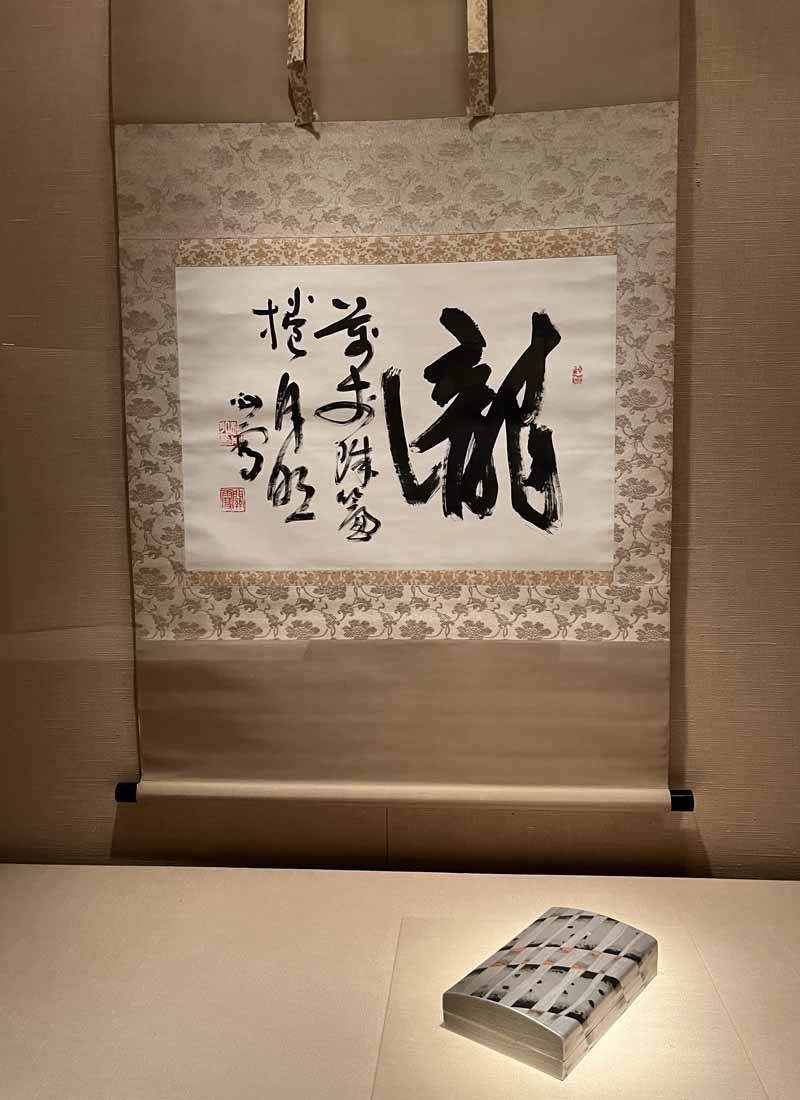
Ōtsuki Masako (born 1943), Distant (Yu) Silver Vase, 2007, silver with gold decoration,
Metropolitan Museum of Art
Nestled in cases across from Isamu Noguchi's Water Stone in the Metropolitan Museum's Japanese art galleries is presently a display of nine elegant examples of Japanese contemporary metalwares. These vases, jars, and containers fashioned of gold and silver are the second rotation of a generous gift of 18 Japanese contemporary metalwares made in 2020 by Hayashi Kaoru, collector and founder and group CEO of Digital Garage, Inc., a Tokyo-based IT corporation.
These artworks exemplify the major metalworking techniques used by Japanese contemporary artists and represent a wide range of genres and forms—from traditional tea wares, such as cast iron kettles and subtle fresh-water jars, to flower vessels, large bowls, and sculptural works. Many of the decorative motifs and shapes are inspired by nature, particularly light and water. All showcase an extremely fine attention to detail, precision, and dedication to presenting the unique qualities of metal.

Ōsumi Yukie (born 1945), High Tides Come In (Shiomitsu), 2007, hammered silver with nunomezōgan (textile imprint inlay) in lead and gold, Metropolitan Museum of Art
Several works in the collection were crafted by Living National Treasures, artists who have achieved the highest level of mastery of their craft and who are entrusted to pass it along to future generations. One of these exceptional artists is Ōsumi Yukie, whose work is represented above and who was named a Living National Treasure in 2015, the first woman to receive this honor in metalwares. As can be seen in this vase, she specializes in tankin, or hammered vessels, which involves hammering metal-leaf or wire into a fine, mesh-like grid incised into the surface of the metal. More examples of Ōsumi Yukie's work, as well as that of other accomplished artists in this field, will be on view during Asia Week at Onishi Gallery.
Onishi Gallery, which has been located in Chelsea since 2005 and features contemporary Japanese artists who work in a range of media, including ceramics, metalwork, lacquer, glass, sculpture and painting, was one of Mr. Hayashi's sources for the contemporary metalwares gifted to the Met. Moreover, the gallery helped organize the exhibit as a project, termed the Art of Giving, supported by the Japanese government to build a stronger market for Japanese decorative arts (kōgei) in the US and Europe. More information about this worthwhile program can be found by clicking here.

Oshiyama Motoko (born 1958), Evening Haze (Banka) Document Box, 2009, silver, copper and gold alloy (shakudō), brass, and copper and Hashimoto Kansetsu (1883-1945), Waterfall, ca. 1940, hanging scroll, ink on paper, Metropolitan Museum of Art
These contemporary metalwares are part of the Met's current exhibition Japan: A History of Style, the fourth and last rotation of which is on view until April 24th. This series of explorations of distinctive genres, schools, and styles that comprise Japan's rich artistic tradition is undertaken through the display of 300 works of art gifted to the Met during the past decade and which have profoundly deepened and broadened the museum's collection of Japanese art, as evidenced by the metal Document Box from Mr. Hayashi, pictured above, with the bold example of modern calligraphy gifted by Mary and Cheney Cowles in 2019.
To watch an informative video about Japanese contemporary metalwares with explanation by Monika Bincsik, Diane and Arthur Abbey Assistant Curator for Japanese Decorative Arts at the Met, click here
